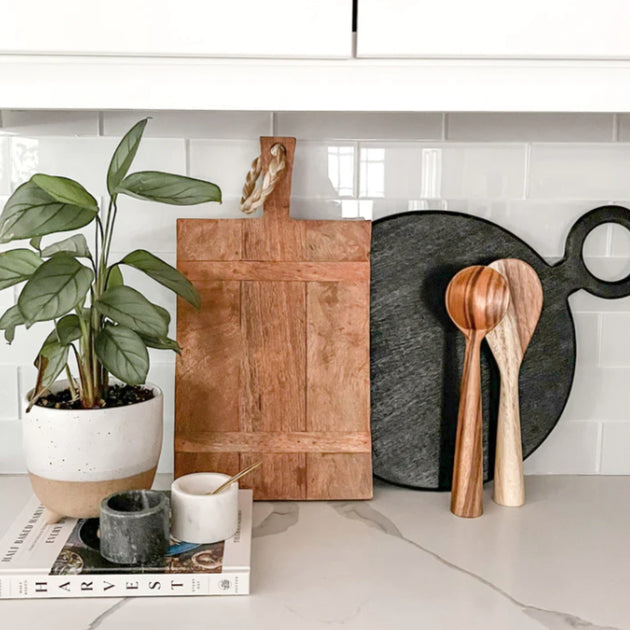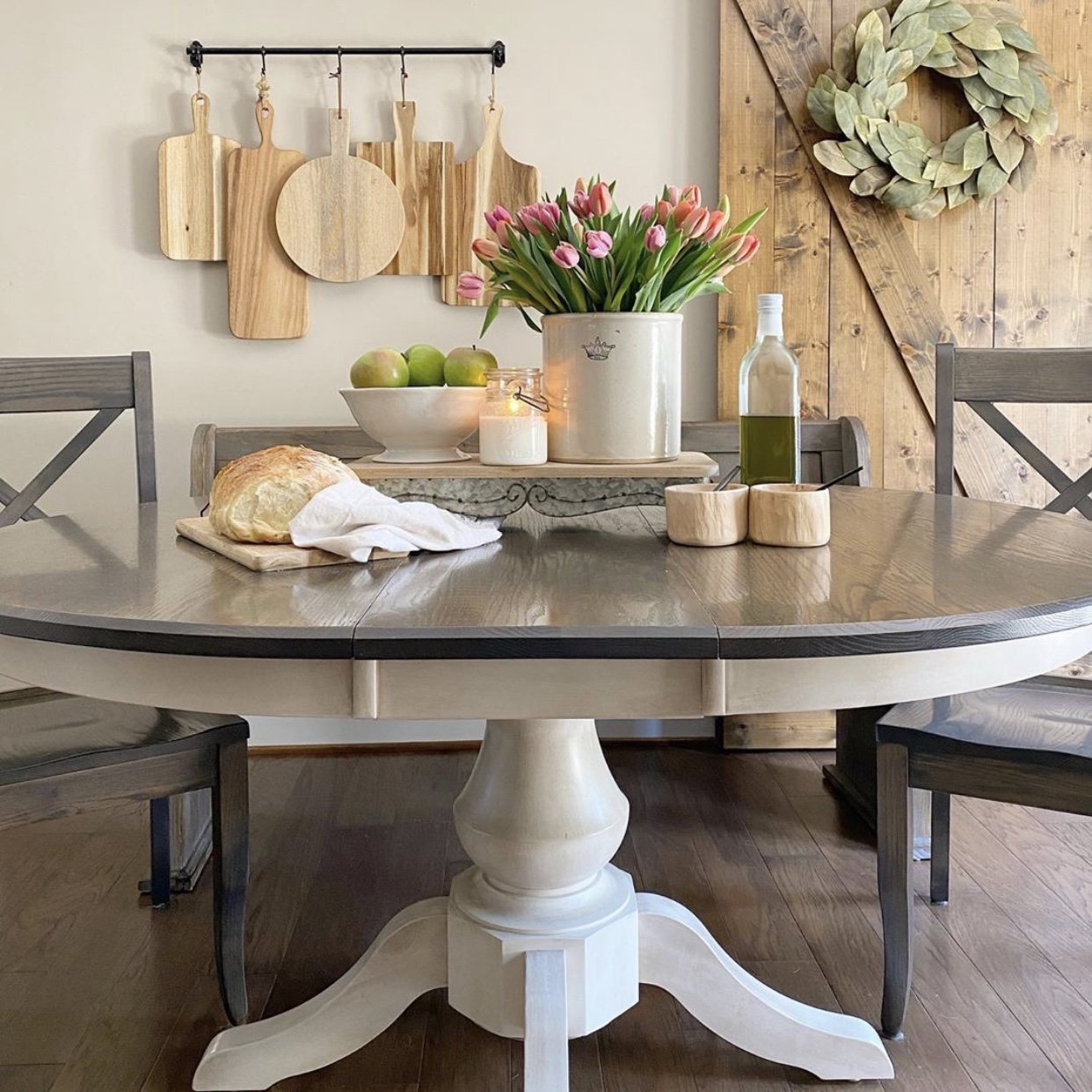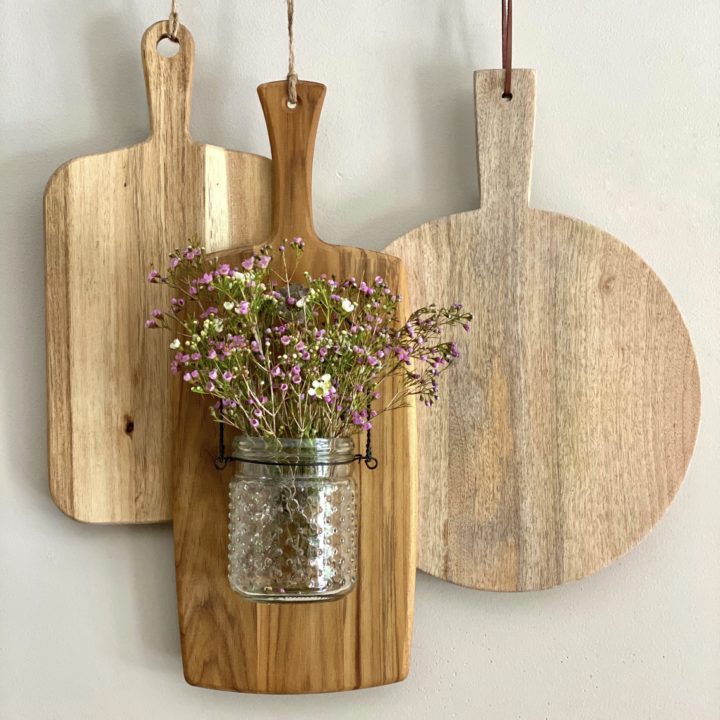There’s something undeniably charming about wooden cutting boards. Beyond their practical function in the kitchen, they serve as beautiful decor pieces that can transform your culinary space into a warm and inviting area. From rustic farmhouse styles to sleek modern designs, wooden cutting boards can add character and charm to any kitchen. In this comprehensive guide, we will explore how to leverage wooden cutting boards as decor elements in your home, along with practical tips on care, styling, and more!
Why Choose Wooden Cutting Boards for Decor?
When it comes to kitchen decor, wooden cutting boards offer several advantages:
- Natural Aesthetics: Wood brings warmth and a touch of nature indoors.
- Versatile Use: They can be functional and decorative at the same time.
- Durability: High-quality wooden boards can last for years with proper care.
Personal Experience with Wooden Cutting Boards
As someone who loves to cook and entertain, I’ve found that wooden cutting boards have become a staple in my kitchen decor. I often showcase them on my countertop, pairing them with fresh herbs or colorful produce. Not only do they serve a purpose during meal prep, but they also create beautiful focal points that impress guests. I remember hosting a dinner party where I displayed a selection of cheeses on my largest wooden board; it was a hit!

Types of Wooden Cutting Boards
Understanding the different types of wooden cutting boards can help you choose the best one for your decor style and functional needs. Here’s a breakdown:

1. End Grain Cutting Boards
End grain boards are made by arranging the tree’s end pieces together. They are known for their durability and resistance to cuts and scratches, making them an excellent choice for serious cooks.

Pros and Cons of End Grain Cutting Boards
| Pros | Cons |
|---|---|
| Durable and long-lasting | Generally more expensive |
| Gentler on knives | Heavier and bulkier |
| Beautiful wood grain patterns | Requires more maintenance |

2. Edge Grain Cutting Boards
These boards are made from strips of wood glued together. They are easier to maintain than end grain boards and are often lighter.

Pros and Cons of Edge Grain Cutting Boards
| Pros | Cons |
|---|---|
| Lightweight and easy to handle | More prone to cuts and scratches |
| Usually more affordable | May dull knives faster |

3. Bamboo Cutting Boards
Bamboo boards are an eco-friendly option, lightweight, and typically more affordable than hardwood options. While they look great, they can be less durable than traditional wood.
Pros and Cons of Bamboo Cutting Boards
| Pros | Cons |
|---|---|
| Eco-friendly and sustainable | Less durable over time |
| Lightweight and easy to store | Can be more difficult to clean |
Styling Tips for Wooden Cutting Boards Decor
Now that you know the types of wooden cutting boards available, let’s delve into how to style them effectively within your kitchen decor.
1. Create a Focal Point
Display a large, beautiful cutting board on your countertop or kitchen island. Pair it with fresh herbs in a small vase or an attractive knife set. This setup not only makes for an eye-catching display but also enhances functionality.
2. Use as a Wall Art Piece
Consider hanging wooden cutting boards on the wall. This can be especially effective in rustic or farmhouse-style kitchens. Choose boards with unique shapes and textures to create visual interest.
3. Layering and Grouping
Group smaller cutting boards together on a shelf or countertop for a styled look. Layering different sizes and wood types adds depth and dimension to your decor.
4. Seasonal Decorations
Update your cutting board decor with the seasons. Use them as bases for seasonal decor, such as pumpkins in fall or fresh flowers in spring. You can also create themed displays for holidays.
Care and Maintenance of Wooden Cutting Boards
Proper maintenance is key to ensuring that your wooden cutting boards remain beautiful and functional. Here are some tips:
1. Regular Cleaning
Clean your cutting boards after every use with hot water and mild soap. Avoid soaking them or placing them in the dishwasher, as this can lead to warping and cracking.
2. Oiling
To keep your wooden boards hydrated and prevent drying out, apply mineral oil regularly. This will also enhance the wood’s natural beauty.
3. Avoid Cross-Contamination
Consider using separate boards for meat and vegetables to avoid cross-contamination. This not only keeps your food safe but also prolongs the life of your boards.
Comparison of Popular Wooden Cutting Boards
Here’s a handy comparison of some popular wooden cutting boards available on the market:
| Brand | Type | Size | Price | Best For |
|---|---|---|---|---|
| John Boos | End Grain | 24″ x 18″ | $150 | Serious Cooks |
| Teakhaus | Edge Grain | 18″ x 12″ | $70 | Everyday Use |
| Bamboo Elements | Bamboo | 16″ x 10″ | $25 | Eco-conscious Buyers |
Frequently Asked Questions (FAQs)
What is the best type of wood for cutting boards?
The best types of wood for cutting boards are typically hardwoods, such as maple, walnut, and cherry, due to their durability and knife-friendly surfaces.
Can wooden cutting boards be used for raw meat?
Yes, but it’s best to have separate boards for raw meat and other foods to prevent cross-contamination.
How often should I oil my wooden cutting board?
It’s recommended to oil your wooden cutting board every month, or whenever it appears dry.
Can I put my wooden cutting board in the dishwasher?
No, you should avoid placing wooden cutting boards in the dishwasher, as the heat and moisture can warp and crack the wood.
How do I remove stains from my wooden cutting board?
For stains, you can sprinkle salt on the area and use half a lemon to scrub it away. Rinse with water and dry thoroughly afterward.
Conclusion
Wooden cutting boards are more than just kitchen tools; they are versatile decor elements that can elevate your kitchen’s aesthetic. Whether you choose to display them or use them functionally, they bring a rustic charm and warmth that is hard to replicate with other materials. By following the styling and care tips provided in this guide, you can enjoy your wooden cutting boards for years to come.
So, why not take a look at your collection and see how you can incorporate them into your decor today? You might just be surprised at the transformation!